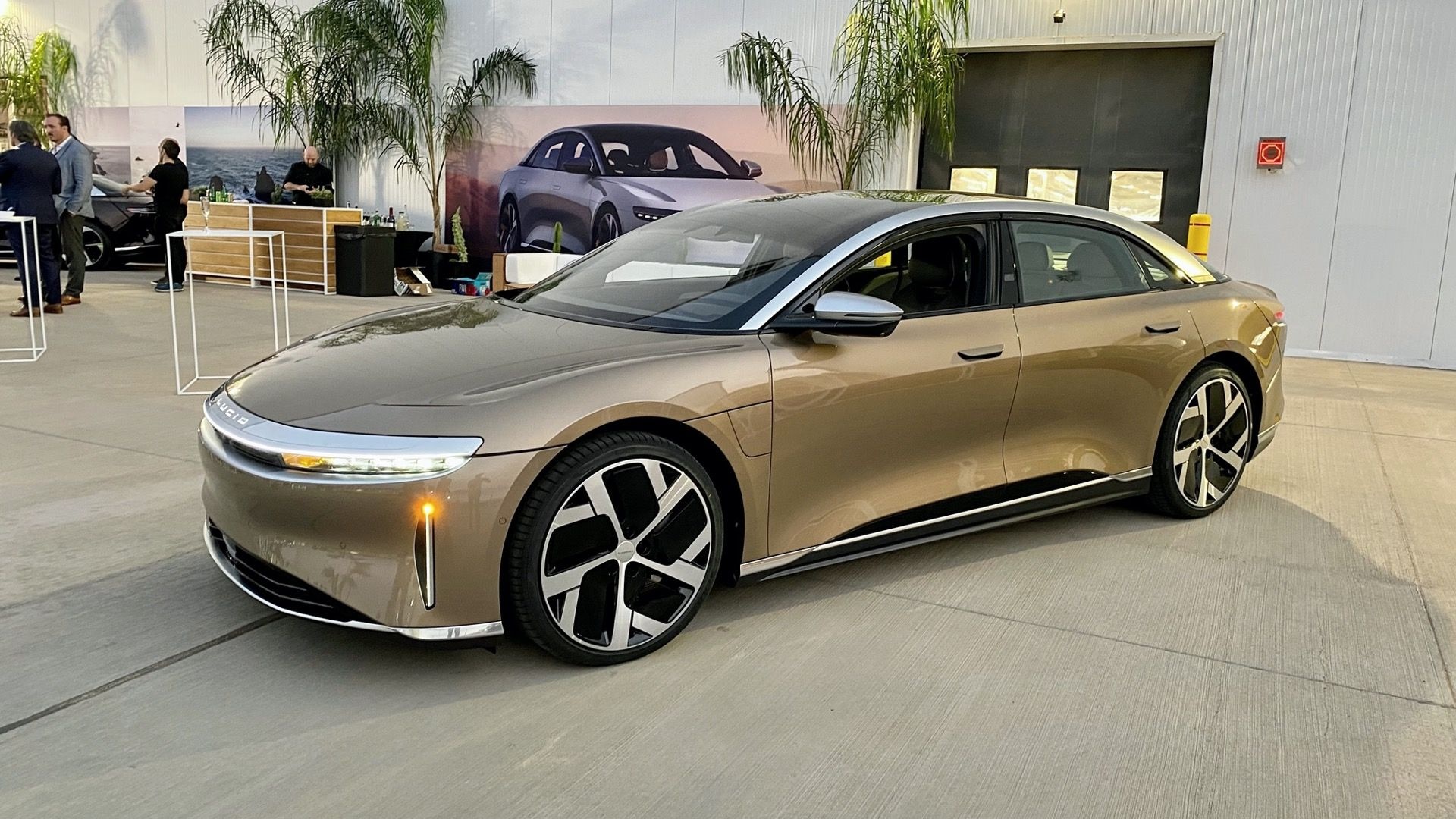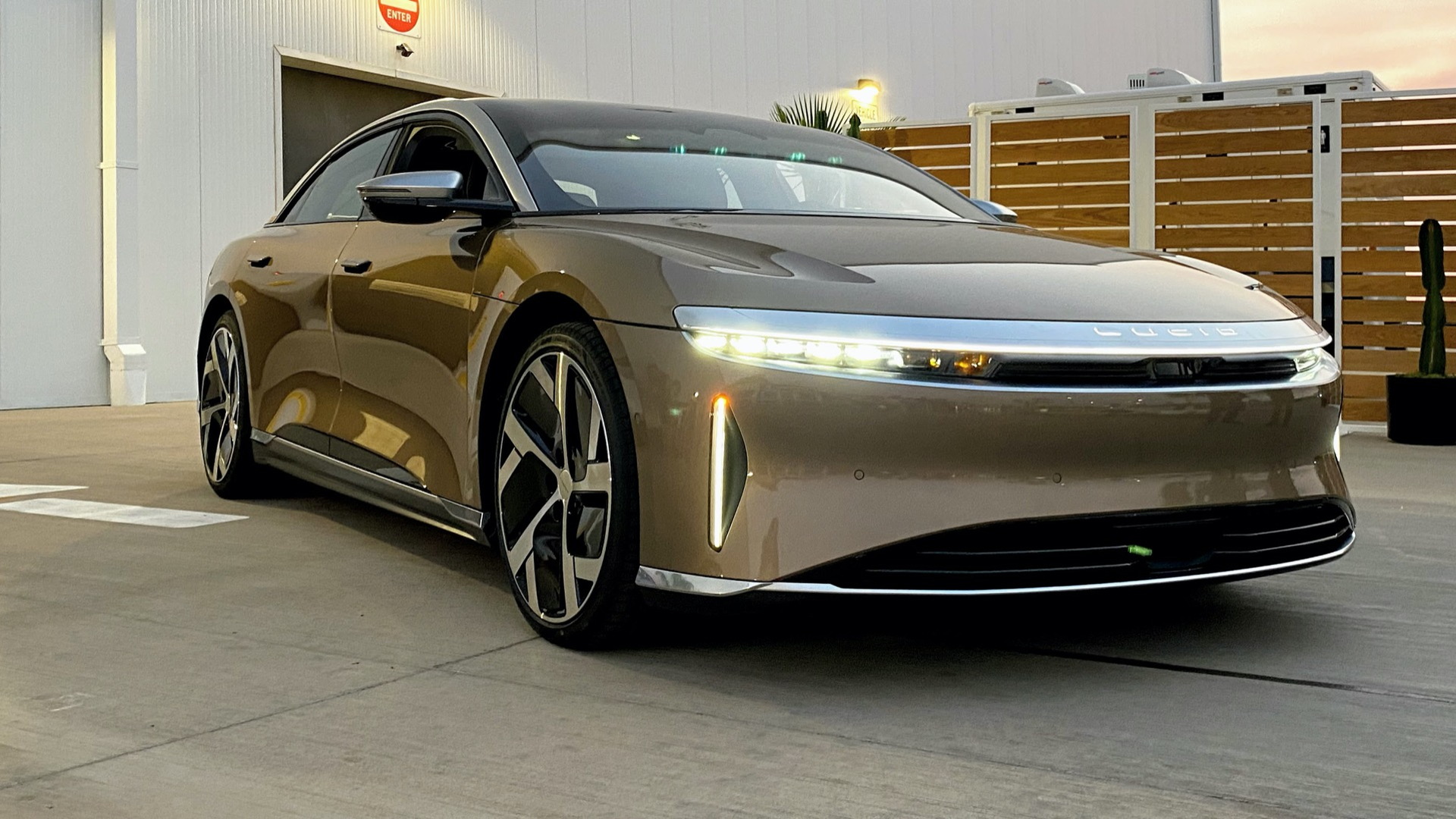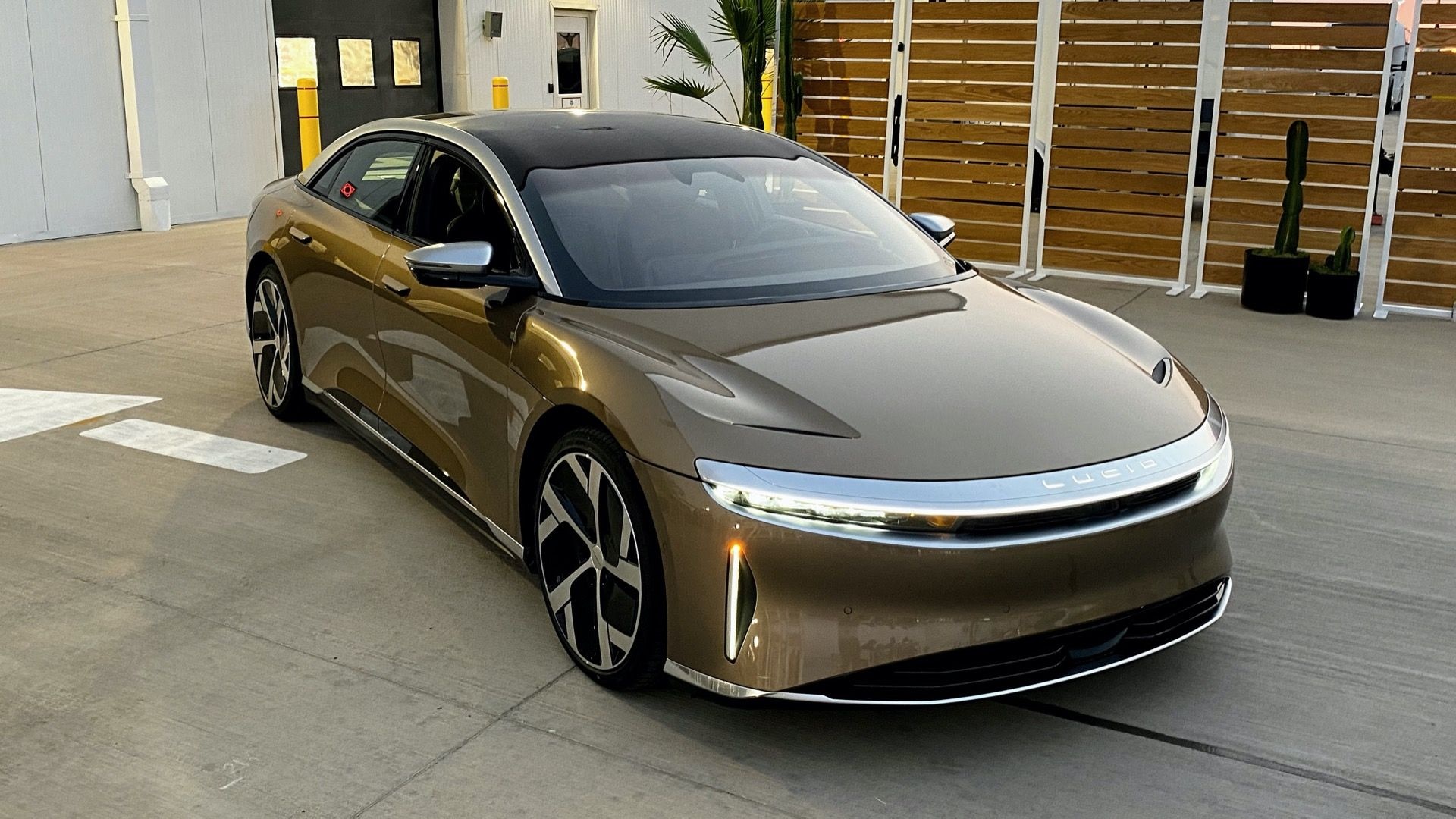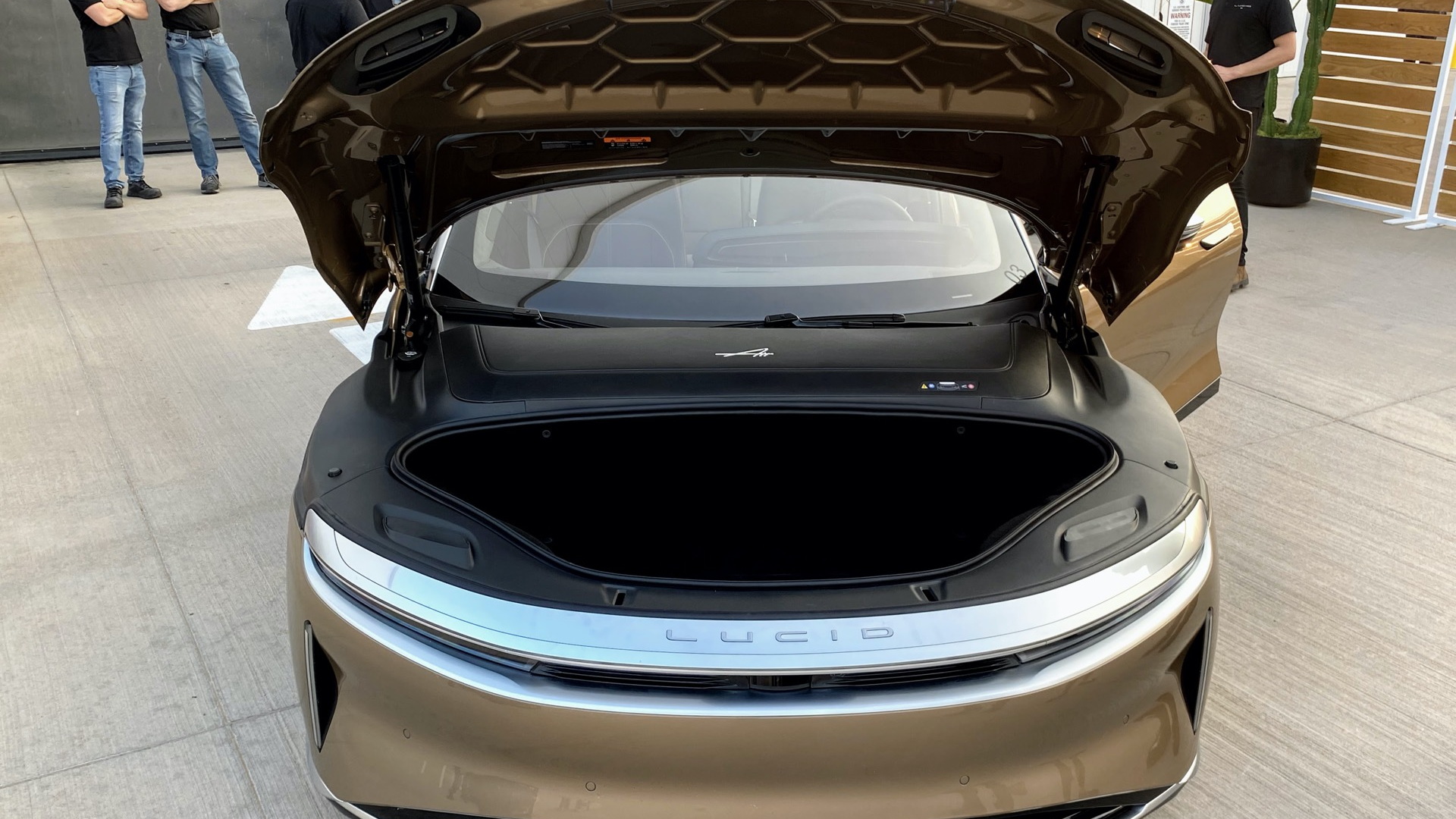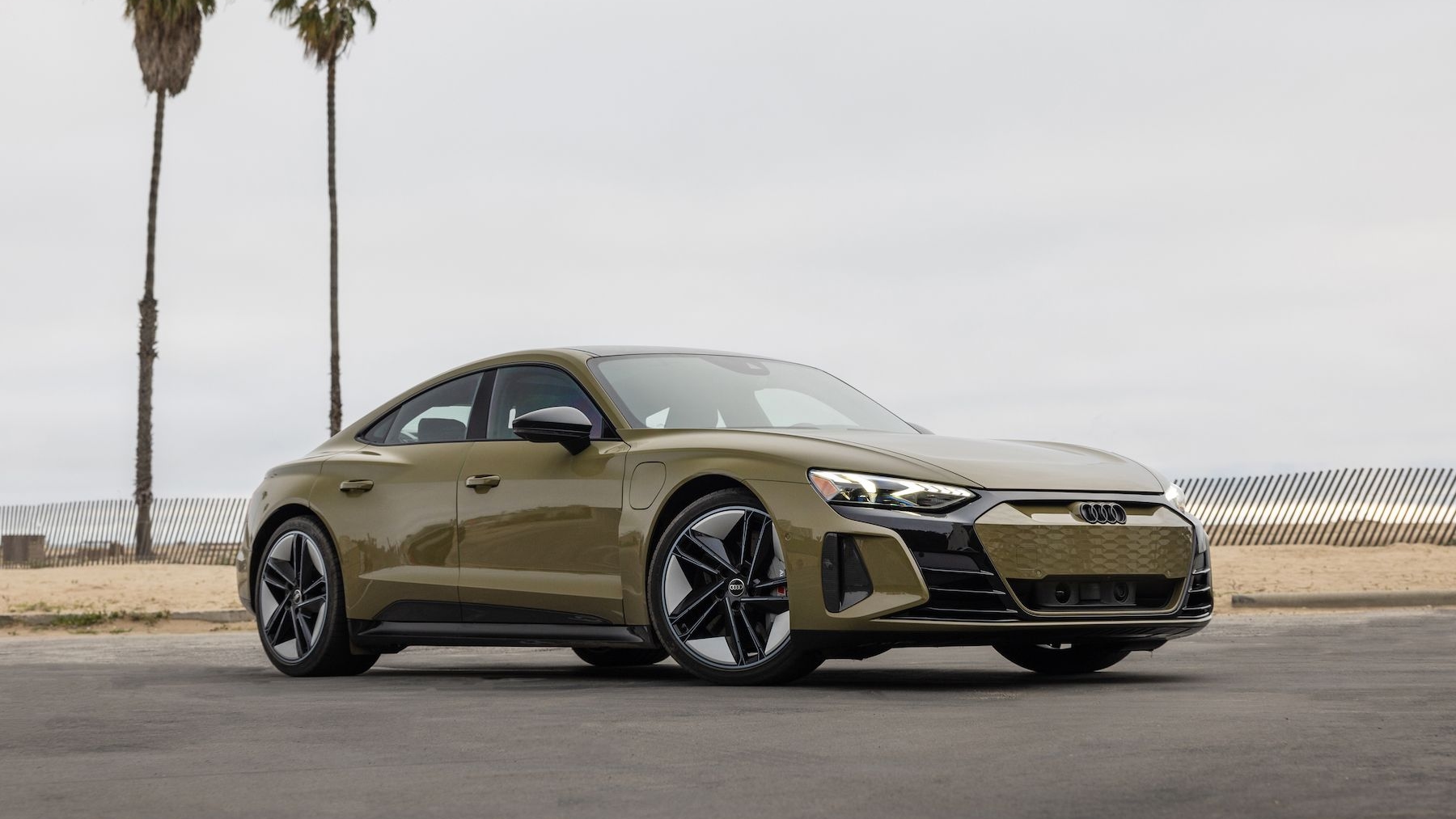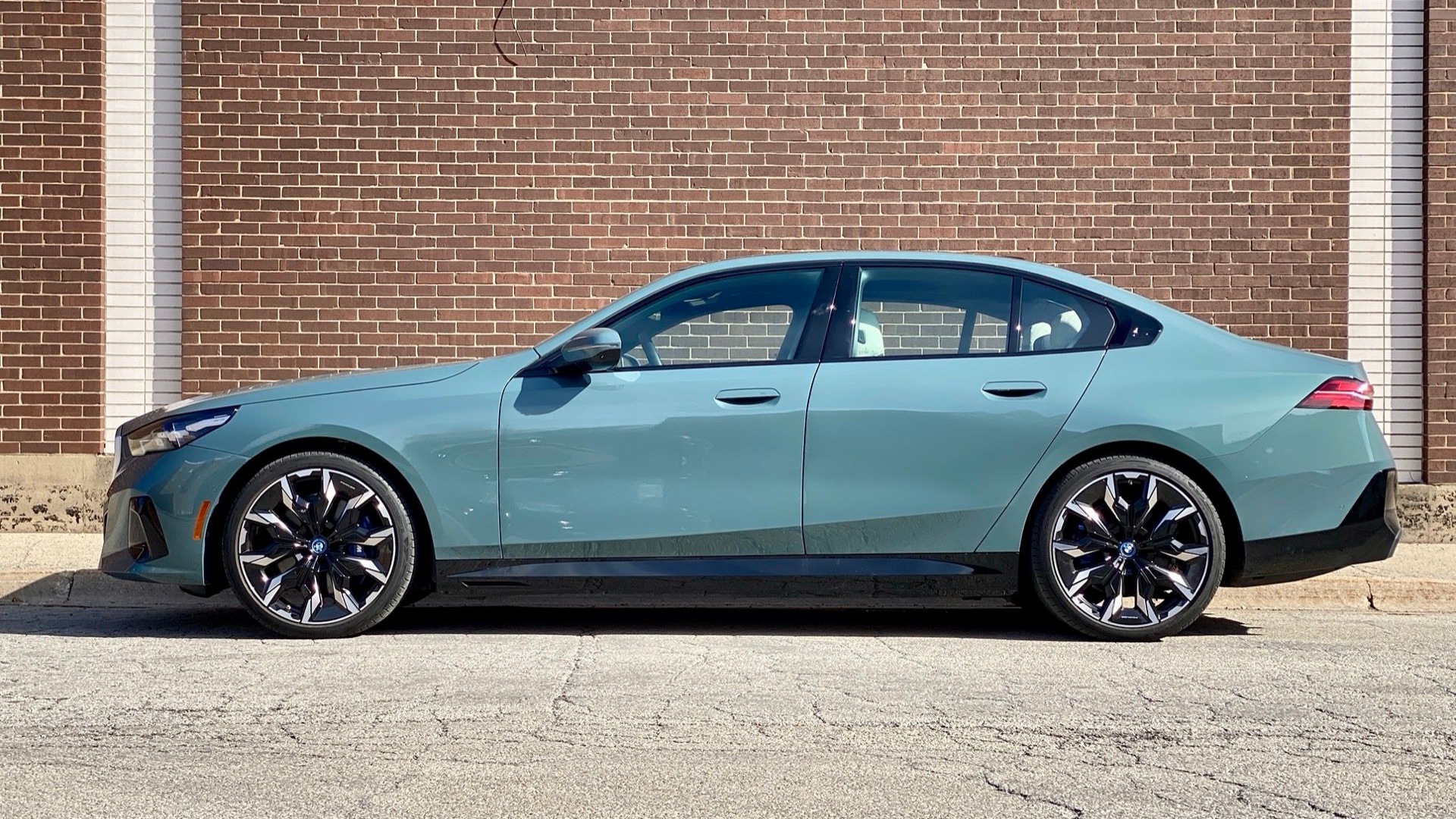As some traditional luxury automakers release electric vehicles amid promises that range, charging, and performance will all improve in a few years, Lucid is launching its brand and already beating the top numbers from Tesla and any others.
The 2022 Lucid Air, which went into production last week, boasts an EPA range of up to 520 miles, and in the Dream Edition Performance version I drove, an output of up to 1,111 hp, a 0-60 mph time of 2.5 seconds, and a quarter-mile time of just 9.9 seconds. And on a 350-kw DC fast-charge connector the 112-kwh battery pack can recover up to 20 miles a minute, or up to 300 miles in 20 minutes.
Based on a very brief first drive last week, I can report that it feels just as quick as it teases—supercar-quick not just at American freeway speeds but well beyond.
But it’s not just a numbers game, and we’ve all seen plenty of YouTube EV acceleration videos. For a car that arrives, in its Dream Edition version, at $169,000, it had best charm buyers in other ways as well. Mission accomplished. Around the brilliant engineering put into dramatically downsizing the propulsion system and focusing on efficiency, Lucid has built a true driver’s car.

2022 Lucid Air
After less than 30 minutes of actual drive time split between me and a driving partner, plus about an hour in and around the car, that’s the biggest surprise. The Air doesn’t withhold some of the inherent sensations of driving enjoyment. From chassis to interface, Lucid has been just as relentless in getting the whole car right as it has in perfecting the power and energy pieces to hit the magic numbers. And it shows.
Leading-edge aero, but a presence unlike any other
The Lucid Air has one of the best coefficients of drag in the industry, at just 0.21, and yet as a sedan it doesn’t have the telltale “kammback” design or look like it’s sacrificed its proportions for the sake of aero. That’s quite the triumph for this beautiful design, from Lucid VP Derek Jenkins, who also penned the current ND-generation Mazda MX-5 Miata and contributed to the Mazda CX-9 that helped solidify the look of Mazda’s crossovers.
Although the Air can be a chameleon in pictures, in person it has a presence unlike any other vehicle. The thin, wide themes that apply to the nose and, inside, the dash, look aircraft-inspired and bring out the low-and-wide look of the car, while the thick rear pillar, and the French curve arches ahead of it and around the rear window, form a memorable signature.

2022 Lucid Air
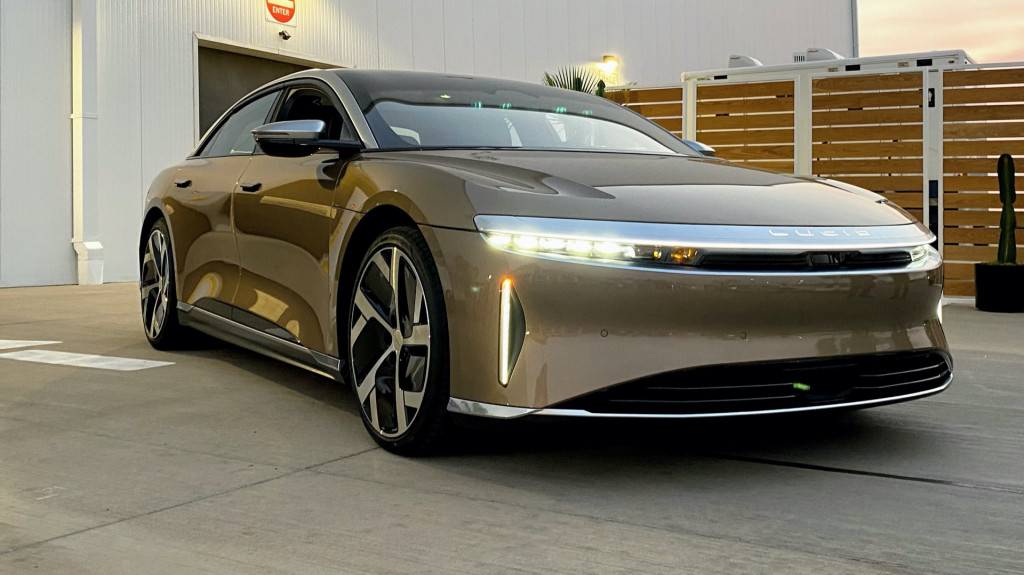
2022 Lucid Air

2022 Lucid Air
At 195.9 inches long, 76.3 inches wide, and 55.5 inches high, and riding on a 116.5-inch wheelbase, the Lucid Air is within an inch of the Tesla Model S in most of its critical dimensions—except for height, where it’s 1.4 inches lower. Although the back seat requires some to duck their heads when getting in, that’s the only exception to the impression that the Air feels quite a bit roomier inside than the Model S, especially in back. The trunk is spacious, with a flexible cover that can conceal a deep well at the rear. You can fold the split rear seatbacks forward for larger items, or use the pass-through. In addition, there’s a frunk—not just a token space for a handbag, but what’s claimed as the largest frunk of any electric car. Numbers are forthcoming.
With downsized drive components, more space for people
Lucid has applied its persistent engineering approach toward downsizing all the critical electric-drive components. The shockingly small motors are not much larger than motors that I’ve seen used as part of a far less powerful hybrid system. They’re packaged elegantly with their gearbox and inverter.
Getting into the Air for the first time, it’s impossible not to focus on what’s above. The available Glass Canopy roof spans from the base of the windshield all the way to a crossmember behind the heads of those in the front seat, and it’s interrupted only by the rearview mirror module and sunshades.

2022 Lucid Air
The use of soft, porous materials elsewhere in the cabin balances out the sound quality and ambience for all the glass above—although in the back seat we noticed some pavement “patter” at the rear wheels.
That’s something you might not notice if you’re enjoying the Air’s 21-speaker immersive audio with Dolby Atmos. The infotainment system is compatible with Apple CarPlay and Android Auto, while voice commands are via a native installation of Amazon Alexa.
The front seats in our test car provided plenty of support and adjustments, with built-in massage and cooling backing up that all-day comfort. An optional Executive Rear Seating package will add more recline and long legrests, much like what you’d encounter on a first-class plane seat.
Tuned for the driver as much as the passengers
But really, you’ll want to be the one driving. The Air has a five-link strut suspension in front, with an integral-link setup in back. The five-link setup, one of the late-stage engineering changes to the Air, along with the mechanically variable steering rack, constitutes an analog solution to counter the digital overload of the propulsion. The layout effectively purges torque steer and helps assure predictability, with weight transfer staying the same whether in regenerative braking or foundation (friction) braking.

Lucid Air body structure and battery pack
The Air lacks an air suspension like there is in the Model S. It just has solenoid-controlled semi-active dampers on all four wheels. The hysteresis, or lag, from an air-spring setup would have meant too many compromises in the damping that would affect ride and handling, according to Zach Walker, engineering manager for chassis mechanical.
It has a confident, easygoing feel in straight-ahead driving. Given a few chances to attack some exit ramps, I found the Air’s ride and handling to be isolating yet tidy and responsive, with a certain playfulness in the way its 5,050 pounds transfer front to back. We can’t wait to get this model out on a track.
The Air uses all four wheels for regenerative braking, and it can torque-vector during regen, so it makes the most of it given the road surface. Like Tesla, Lucid doesn’t like the idea of brake-blending. When you use the brake pedal, you’re using the pads; lift off the accelerator and you’re in regen. It’s as simple as that, and it makes everything more predictable and easier to tune, as Lucid sees it.

2022 Lucid Air
Pirelli tires, specially developed with Lucid for the Air, carry a high-load (HL) rating and were engineered for grip as well as low rolling resistance and minimizing rolling noise. Our test car was equipped with them in their larger 21-inch size—HL 245/35R21 99 Y XL in front and HL 265/35R21 103 Y XL in back.
Modes cover preferences, not party tricks
Through three drive modes: Smooth, Swift, and Sprint, Lucid tweaks the available power from the propulsion system, accelerator responsiveness, steering boost, and suspension firmness and behavior. Regenerative braking is offered in two settings for each of these drive modes and it provides 0.12g or to 0.3g of resistance.
Separately, you can opt to turn on or off idle creep (what it does when you lift off the brake), or have the car roll or hold after a stop. Drive modes are also decoupled from stability control, and there’s a mode—probably best left for the track—to turn off the stability systems but keep rear-wheel torque vectoring.

2022 Lucid Air
On that track, you won’t find a launch mode, per se—or a drift mode or track mode. To get peak launch times you need to be in Swift mode, with more than a half battery charge, and the system will do a bit of anticipatory pre-conditioning.
Lucid, like Tesla, will provide periodic over-the-air updates that could extend to improving performance, efficiency, and range.
Interfaces deliver clarity
The Air’s screen interfaces, which are quick and lag-free, feel a bit like they split the difference between Tesla minimalism and Mercedes-Benz’s Hyperscreen that essentially occupies the entire dash. Altogether they’re elegant, use crisp fonts with light lettering on a dark background, and position pertinent info up top. There’s a physical gear selector. You pull the shift lever down to engage drive, up to engage reverse, and press in for park, just like in a Mercedes-Benz. Functions like drive modes, charging, setting navigation destinations, and other in-depth settings that you might need only when parked sit farther down in the line of sight, in a Pilot Panel that retracts into the dash when you want.

2022 Lucid Air

2022 Lucid Air

2022 Lucid Air

2022 Lucid Air
The Air also has Dream Drive, Lucid’s limited hands-free driver-assist system, with functionality like Navigate on Autopilot in the works. It includes up to 32 sensors, with camera, radar, and ultrasonic sensors, as well as Lidar. At this point, it tells the driver to take charge after 15 seconds of hands-free driving, but it trains a camera on the driver and allows an extended period of hands-off drive as long as the driver stays focused. Details here are still being finalized.
Never mind this business of only dual motors and 1,111 hp. A tri-motor model that’s maybe a year out has CEO Peter Rawlinson giddy with anticipation.
We can’t wait for more time in the Air. There was never any reason to doubt that Rawlinson and his team would come up with one of the quickest and most efficient EVs yet. That it’s such a strong entry as a luxury sedan and driver’s car caught me by surprise. For a company that has big plans and more models in the works, that’s a very good sign.
